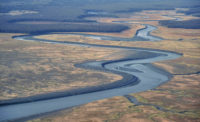Earlier this month, the National Oceanic and Atmospheric Administration predicted that the 2024 Atlantic hurricane season could rank “among the busiest on record,” as climate change continues to cause more extreme weather events. With the number of such events caused by warming ocean temperatures and other climate change set to grow, costs also wiil rise—in some cases exponentially.
There is growing consensus among government agencies such as the National Institute of Standards and Technology(NIST) and the National Institute of Building Sciences, as well as industry groups such as the American Society of Civil Engineers, that communities and federal disaster recovery agencies must consider compounding disaster effects —weather-related or not—and quantify costs to return critical infrastructure and buildings to functionality after an event occurs.
Most existing building codes now focus on preventing loss of life, not restoring functionality, says Maria Lehman, past president of ASCE and vice chair of the National Infrastructure Advisory Council.
At a time when historic levels of federal funding are flowing for new infrastructure projects, decision-makers should take care to use that funding wisely, says Aspasia Nikolaou, earthquake engineering group leader in NIST's materials and structural systems division.
As of Aug. 8, 19 climate- or weather-related disasters with damages exceeding $1 billion have occurred in the U.S—in line with the significant uptick over the past five years. In previous years since 1983, there was only an average of eight events annually, according to NOAA calculations.
A recent analysis by the National Academies examined the costs of successive billion-dollar storms in the Gulf of Mexico between 2020 and 2021 that occurred while communities were grappling with deaths, materials supply shortages and other vulnerabilities caused by the COVID-19 pandemic. “This constellation of sequential, sudden-onset disasters imposed compounding stress on a region with multi-faceted and persistent socio-economic and socio-environmental disparities,” the report concluded.
When Category-4 Hurricane Delta struck Cameron Parish in Louisiana in October 2020, the community was still repairing roofs and infrastructure damaged by Hurricane Laura five weeks earlier. Less than five months later, Winter Storm Uri froze tarps on roofs not repaired after the previous storms, with frozen pipes causing many households to lose access to clean water.
“I think that we have a big challenge, which is we have the Bipartisan Infrastructure Law, so we have money, but if the money is not invested wisely, we are going to have the same issues,” Nikolaou says. “It’s important to know what questions to ask” in making decisions about infrastructure investments rather than thinking there is one "optimal" approach, she says, which could result in not getting to the root of a potential problem in some areas.
Part of understanding how and where to invest requires accurate data about true costs—not just to replace damaged infrastructure, but also those that can include economic ramifications of time lost from work, hospitalizations or lost toll road revenue if those are inaccessible, adds Lehman, who also is U.S. infrastructure lead for global professional services firm GHD.
Efforts are underway to quantify true costs in a more holistic way, by the federal standards agency, the World Bank and others.
Lehman points to a recent GHD study that found widespread—although uneven—support across generations in several countries to address climate change and reduce carbon emissions. A total of 13,000 people of varied ages were surveyed in global communities, including 4,000 people in the U.S.
“If it makes so much more sense to build in resilience at the beginning of a project or series of projects, why aren’t we doing that?” asks Lehman.






